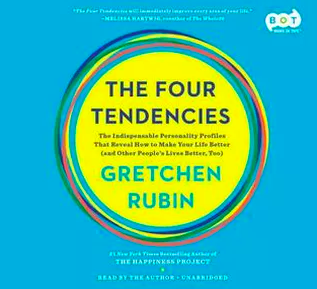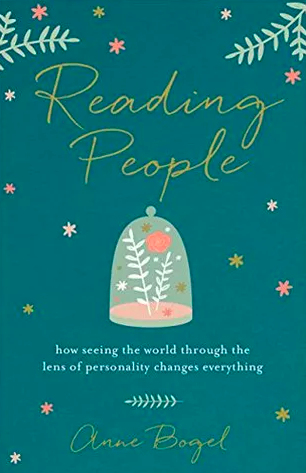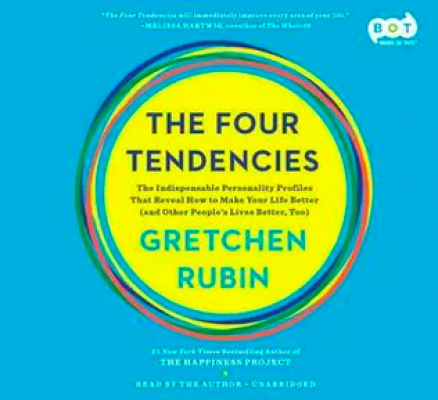
Though I am usually a dedicated fiction reader, there are certain types of non-fiction that always call to me. I am a sucker for a juicy losing my religion memoir, along the lines of The Sound of Gravel by Ruth Wariner and Unorthodox by Deborah Feldman. Narrative non-fiction exploring medical ethics—The Immortal Life of Henrietta Lacks by Rebecca Skloot and Stiff by Mary Roach—never fails to pull me in. And last but not least, I’m love books that explore personality types, so I couldn’t pass up The Four Tendencies by Gretchen Rubin and Reading People by Anne Bogel. As Gretchen Rubin says at the beginning of The Four Tendencies,
“They say there are two kinds of people in the world: those who divide the world into two kinds of people and those who don’t.”
Clearly, I fall into the former camp as I love to learn about personality types and place my friends, coworkers and family members into various categories. It helps me figure out their motivations and how to interact with them in the most effective way. Rubin’s premise is that people have four different tendencies based on how they respond to inner and outer expectations. Upholders readily meet both, obligers meet outer but fail to meet inner, questioners resist outer but meet inner, and rebels shun all expectations. As soon as I read the first few pages of this book and looked at the diagram of the four tendencies, I began mentally placing myself and my family members into their corresponding circles, and I haven’t been able to stop since. I am unquestionably an upholder. I do everything anyone asks of me far in advance of any deadlines and putting aside my weakness for ice cream, I push myself to meet all inner expectations to the point of obsession. I asked my husband to take the four tendencies quiz and he grumbled something about hating personality tests, but in true obliger fashion, he took it anyway. I won’t bore you with tales about my parents or friends. Suffice it to say that Rubin has come up with a fascinating personality framework that really rings true. As she mentions several times, the four tendencies doesn’t explain everything about a person’s personality, but it does illuminate why people do some of the things they do and how we can use the understanding of these tendencies to improve both our personal and professional relationships. As soon as you understand the framework you won’t be able to stop categorizing everyone you know. If you want to figure out which tendency fits you best, you can take the quiz on Rubin’s website.
https://www.surveygizmo.com/s3/3706759/Gretchen-Rubin-s-Quiz-The-Four-Tendencies

In her book, Reading People, Anne Bogel, a book blogger and host of the wonderfully addictive podcast called What Should I Read Next, puts her lifelong fascination with personality types to work. In each chapter, she explains a different personality framework using real life anecodotes to make them more tangible and understandable. Some of the frameworks were familiar to me, like introvert vs. extrovert (Quiet by Susan Cain is an excellent exploration of this subject) and the Meyers-Briggs indicator, while others I had never even heard of—Keirsey’s temperaments and the enneagram. No matter whether she is explaining a simple or complicated framework, Bogel does a masterful job of breaking the concepts down into smaller parts and using stories to illustrate the ideas. I won’t claim to remember everything I read, but this is definitely the kind of book you can come back to for reference in the future. A paragraph in the introduction beautifully sums up why studying personality is so important.
“I’ve come to think understanding personality is like holding a good map. That map can’t take you anywhere. It doesn’t change your location; you’re still right where you were before. But the map’s purpose isn’t to move you; it’s to show you the lay of the land. It’s the tool that makes it possible for you to get where you want to go.”
